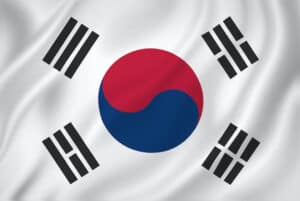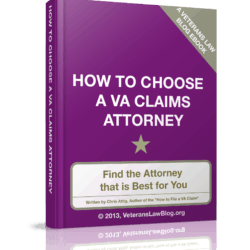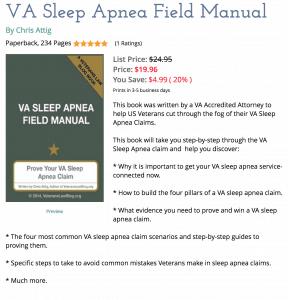Agent Orange was not only used in Vietnam. In fact, it was used all around the world, even a couple of bases here stateside.
Veterans who served in Korea during a certain time period in the Vietnam war were likely exposed to herbicides, including Agent Orange.
The “official version” is that herbicides like Agent Orange were only used within 350 yards of the Korean DMZ.
However, I’ve seen hundreds of sworn affidavits from Korean DMZ veterans who observed spraying alongside the roads in South Korea, as well as in and around bases like Camp Casey, Camp Howze and Camp St. Barbara. I’ve recently been involved in a case where multiple soldiers who did not know each other had provided sworn affidavits that they even applied, or saw herbicides applied, in an around the mess halls on Camp Casey.
Two Ways to Prove Up your Agent Orange Korea claims.
There are two ways that a veteran can prove the in-service incurrence element of a service connection claim when that incurrence involves exposure to herbicides, including Agent Orange, while serving in Korea during the Vietnam War.
First, they can prove the elements of the presumption of exposure to herbicides like agent orange.
Second, they can establish direct service connection.
After walking through those two methods of proving exposure to herbicides (including Agent Orange) while serving in Korea during the Vietnam war, I want to share two additional pieces of information with you.
First I want to share some of the common “tricks and traps” that the VA and the BVA deploy to deny service connection to Korean Veterans based on their exposures to herbicides.
Second, I want to show you a couple cases so you can see how veterans use lay evidence to prove their exposure to herbicides, including Agent Orange, while serving in Korea during the Vietnam war.
The Presumption of Exposure to Herbicides, including Agent Orange, on the Korean DMZ.
The first way that you can establish exposure to herbicides while serving in Korea during the Vietnam War is to prove the elements of a legal presumption.
Before we talk about these elements, though, remember what a legal presumption is.
A legal presumption is a way to avoid having to prove certain facts without actually proving them. A presumption can be rebutted by the VA or BVA. Once a veteran proves that he or she is entitled to the presumption of exposure to herbicides, including Agent Orange, while on the Korean DMZ, the VA and BVA can rebut that presumption by showing affirmative evidence that a veteran was not exposed to herbicides.
“Affirmative evidence” is a legal term of art – it refers to the act of putting forth evidence that proves a fact. Because it is next to impossible for the Secretary to provide affirmative evidence that you were NOT exposed to herbicides or Agent Orange.
With that in mind, let’s talk about the elements of the legal presumption of exposure to herbicides in Korea during the Vietnam war.
The first element is “time” – a veteran has to show service in the Republic of Korea between April 1, 1968, and August 31, 1971. Most of the time you can prove this with a list of the places and dates of service that appear either on a DD-214 or elsewhere in your military service records. If a veteran needs assistance from the VA with proving their service was within these dates, they can tell the VA what dates they served in Korea, what units they remember serving in, and the VA is required to verify dates of service from the Dept. of Defense’s Joint Service Records Research Center (JSRRC).
The second element is a “unit” element. The VA has conceded that several units had a significant likelihood of exposure to herbicides, including agent orange. If a veteran served in one of those units, he or she meets the “unit” element. You can find the Secretary’s current list in their Manual M-21, which is currently found at this link.
At the time of the publication of this post, the VA recognizes that service in one of these units is one of the elements of presumptive service connection for Agent Orange exposure along the Korean DMZ:
2nd ID: Combat Brigade
7th Infantry Division: 3rd Brigade
7th Cavalry: 4th Battalion
7th Cavalry: 4th Squadron, Counter Agent Company
9th Infantry: 1st and 2nd Battalions
10th Cavalry: 2nd Battalion
12th Artillery: 1st Battalion
13th Engineer Combat Battalion
15th Artillery: 1st Battalion
17th Artillery: 7th Battalion
17th Infantry: 1st and 2nd battalions
23rd Infantry: 1st, 2nd and 3rd Battalions
31st Infantry: 2nd Battalion (Service Records may show assignment to 2ID or 7ID)
32nd Infantry, 1st Battalion (3rd BDE of 7ID)
32nd Infantry: 3rd Battalion (Service Records may show assignment to 2ID or 7ID)
37th Artillery: 6th Battalion
38th Infantry: 1st and 2nd Battalions
38th Artillery: 5th Battalion
72nd Armor: 1st and 2nd Battalion
73rd Armor: 1st Battalion
United Nations Command Security Battalion – Joint Security Area (UNCSB-JSA)
Now, just because your unit isn’t on this list doesn’t mean that you can’t get the benefit of the presumption of herbicide exposure. Quite the contrary – I have seen a lot of veterans prove the unit element of the presumption by showing the unit they served in along with evidence that it operated in or near the DMZ.
One of my clients was a medic out of Camp Casey; during his time in Korea, a sniper shot and killed US service-members, and my client was the driver that drove up to the DMZ to pick up their bodies. Because he showed his duties placed him on or near the Korean DMZ, he was entitled to the presumption of exposure.
Another client was the driver for a Colonel, who frequently visited his units on the DMZ. He too, gained the benefit of the presumption of herbicide exposure by showing that his job duties took him in or near the Korean DMZ.
This is really important – if you cannot establish the “unit” element of the presumption of herbicide exposure as a Korean vet, the VA is required to ask the JSRRC to verify herbicide exposure. They usually come back with something wishy-washy and non-committal, so make sure that you request a copy of your C-File before you appeal a denial of entitlement to the presumption to the BVA (see below)
The presumption of exposure to Agent Orange is NOT the only way to show that a Veteran is entitled to service connection for current disabilities that result from Agent Orange Exposure.
Proving Direct and Actual Exposure to Herbicides, including Agent Orange, while serving in Korea.
Even if you are not entitled to the presumption of exposure to herbicides, you can still prove direct actual exposure. To do this, you will need to provide sufficient lay evidence (and if appropriate, medical evidence) of your exposure.
Here are some ways that you can do this:
- Personal observations of spraying accompanied by dead vegetation
- Testimony from individuals who sprayed, or witnessed the spraying, at a time and location where you served in Korea
- Listing job duties that put you in or near the Korean DMZ during the years where spraying was conceded (proving direct actual exposure can be really hard if your service in Korea was outside the 1968 – 1971 timeline noted above
Here, are some of the tricks the VA and BVA use to deny service connection claims based on herbicide exposure in the Republic of Korea.
Trick #1: JSRRC relies on Unit Histories to find no proof of Korean DMZ service.
This trick goes something like this. You didn’t serve in one of the units with conceded exposure, so the VA sends a request to the JSRRC to verify herbicide exposure. The JSRRC responds with some nonsense like “the unit histories don’t show the veteran was exposed to herbicide” or “the unit histories don’t show that the unit operated in or near the Korean DMZ.”
Unit histories don’t show activity in the Korean DMZ or herbicide exposure. This is a ridiculous position for JSRRC to take – unit histories simply do not document things like exposure to herbicides or agent orange. If they did, it wouldn’t have taken veterans 20 years after the Vietnam to find out how widespread the use was. Relying on unit histories to find that you did not serve in a unit that operated in or near the DMZ, or that was exposed to herbicides is like using the newspaper to figure out what city your neighbor was born in. Yes, newspapers have facts in them, just not THOSE facts.
Here’s the catch: the JSRRC is required to affirmatively state that you were not exposed to herbicides; only then does the JSRRC effectively counter your testimony that you were exposed.
A veteran can fix this problem when it appears in a VA rating decision by appealing to the BVA.
You might tell the BVA that unit morning reports, or other more specific documentation, might verify your herbicide exposure or that your unit operated in or near the Korean DMZ, and ask the VA to fulfill the duty to assist by requesting that JSRRC review THOSE records.
Or, you might get statements from other members in their unit who had personal knowledge that the unit operated in or near the Korean DMZ, or was exposed to herbicides. You might also look to newspapers like Stars and Stripes to see if a particular event that took place in or near the DMZ is documented in that paper and can corroborate your testimony.
Remember, you don’t have to prove beyond a reasonable doubt that you were in or near the Korean DMZ or exposed to herbicides, only that it is at least as likely as not.
Trick #2: The VA or BVA says your testimony about your exposure to herbicides or activities in or near the Korean DMZ lack credibility.
I am seeing this more and more in BVA decisions denying service connection for herbicide exposure in or near the Korean DMZ. The BVA decision includes a statement that goes something like this:
“Mr. Smith’s testimony that he drove the general in and around the DMZ on a weekly basis while he visited other units lacks credibility. The Dept. of Defense is in the best position to know what units operated in or near the Korean DMZ and because Mr. Smith’s unit is not on that list, his testimony that he was in or near the Korean DMZ lacks credibility.”
There are a couple problems with this approach from the BVA.
First, to find that a veteran lacks credibility, the BVA has to lay out a factual predicate that identifies specific testimony or evidence that is in conflict with other evidence and why that suggests a problem with the veteran’s credibility. The mere fact that two pieces of evidence reach an opposite conclusion does not mean that one lacks credibility.
Second, and a little harder to see, is that the BVA is conflating the elements of the presumption with the elements of direct service connection. It is legal error to say that a veteran cannot prove actual exposure to herbicides, or service in a unit that operated in or near the Korean DMZ, just because the unit they served in is not on the Secretary’s list of units for which exposure is conceded. If this was the case, then no veteran could ever prove direct exposure to herbicides without first showing entitlement to the legal presumption. If this error appears in your BVA decision, you are likely going to need an attorney to help you to appeal that decision to the US Court of Appeals for Veterans Claims.
Trick #3: You have not established that you are competent to state that the chemical you witnessed being sprayed was an herbicide or agent orange.
This is a less frequent BVA error, but it still shows up from time to time nonetheless. Here’s how it works. You testify that you saw an herbicide being sprayed on the road your unit drove to the DMZ every week. You know it was an herbicide because the day after the spraying all the vegetation is dead.
The BVA will look at that evidence and say “oh yeah, well the veteran doesn’t have the necessary expertise to say that the chemical being sprayed was an herbicide or agent orange.” Because the veteran isn’t “competent” to testify as to the nature of the chemical he saw being sprayed, the BVA doesn’t give any weight to his testimony that he was actually exposed to agent orange or herbicides.
When you see this, you know you have a BVA judge that didn’t put a lot of thought into writing its decision.
Here’s why.
A veteran is always competent to testify to what they personally saw or observed in service. And a veteran is always competent to testify as to what they believed about those events that they witnessed. Whether or not the BVA believes that what you saw was an herbicide being applied has nothing to do with whether or not you are qualified to identify the chemical nature of the chemical being sprayed. The question the BVA must consider after hearing your competent testimony of what you saw and did in service is whether that testimony makes it as least as likely as not that you witnessed an herbicide being sprayed.
Consider this: if you testified that you saw dead vegetation, and that was it, then the BVA might be justified in saying that it is less likely than not that you were exposed to herbicides. Anything could have killed that vegetation. Notice that weighing the evidence is wholly distinct from the competence of the proponent of that evidence. The BVA does not always pick up on this less than subtle distinction.
Here’s another example: let’s say you testify at BVA hearing or put in a sworn declaration that you saw a chemical being sprayed, and the vegetation that was sprayed was dead the next day. You are competent to testify to that point because everyone is competent to testify to what they saw. Whether that testimony is credible is another story. Let’s say that you were on Jeju-do island, however, when you say you saw it. Well, it’s highly unlikely that tactical herbicides like agent orange were used in such a location, so the BVA might be on solid ground giving little weight to your competent testimony.
The point, again, is that the BVA often confuses competence of testimony with the weight to be given to competent testimony. Don’t let them get away with it.
Two cases to help you see how to prove exposure to herbicides in the Republic of Korea, or on the Korean DMZ, during the Vietnam war.
I want to share with you 2 cases where I know that Veterans have used other paths to service connection to win their case:
Camp Casey, Korea:
As early as 1999, this Vietnam era Veteran showed that he was exposed to Agent Orange while serving at Camp Casey in Korea.
The interesting thing about this case is that the Veteran used 5 Star Evidence to show that he was entitled to the Benefit of the Doubt Rule in his claim for Agent Orange exposure while serving in Korea.
At the time he filed his claim and appeal, there was no legal presumption that entitled him to service connection.
Camp Carroll, Korea:
In 2014, this Veteran FINALLY proved to the BVA a rare type of exposure: direct proof of exposure to Agent Orange at Camp Carroll in Korea.
This Veteran’s case – known as the House case – is a model for Veterans who are trying to provide evidence of exposure to Agent Orange in areas where the VA and the DoD have not yet conceded that Agent Orange was used or stored.
* This post was originally published on the Veterans Law Blog on October 26, 2010; it has been updated with current information.







i believe i was exposed…while in Korea 81-82…i had chemo and radiation…rare kind carsenoma
Page 13, VA is finally admitting to Agent Orange Dioxin long term exposure to veterans who served well pass when sprayed…….
https://digitaledition.qwinc.com/publication/?i=223537
I am a Korean vet who served along the DMZ in 1972-73. I have type 2 diabetes, high blood pressure, sleep apnea said to be attributed to agent orange. Let’s talk. I have received the run around for years. 215 545-4076.
William – thanks for reaching out. If you want to talk about your case, please submit a consultation request by clicking here. I do represent several Vietnam/Korean DMZ/Agent Orange Vets at the VAROs and BVA.
What posts were you at in korea? I was there from 1994-1995 at Camp Casey – 1/15 FA supporting 2-72 Armor (2nd Tank, as they called it).
Chris
I was over in Korea during 94-95 at camp Casey 2nd tank. Were they using agent Orange at that time? Are we eligible for compensation? I can remember numerous field exercises north of Casey. Thank you. Vinnie
Vinnie,
First of all, I was on a FIST team assigned to B Co (Bulldogs) 2-72 AR at Casey from Feb 1994 – Mar 1995….which company were you in?
Second, to my knowledge, they were not actively using Agent Orange at Casey after the Vietnam era, however, a recent case has surfaced where AO was being stored on Camp Casey underground…we are not sure yet when it was moved, but it appears to have been in the 1980s.
Chris
Your information on presumptive dates and units for Korea Veterans is out of date. More units have been added and the dates have been expanded.
Bill MacQuoid 2nd MP, 2nd ID, 1969-70.
https://www.attiglawfirm.com/shoot/agent-orange-korean-veterans/
Thanks for letting me know, Bill – I try to keep the information up to date, but with 450 posts on the Veterans Law Blog, I rely HEAVILY on folks like you who are willing to let me know we need to update a post. This one will get updated ASAP!
Thank you!
–Chris A.